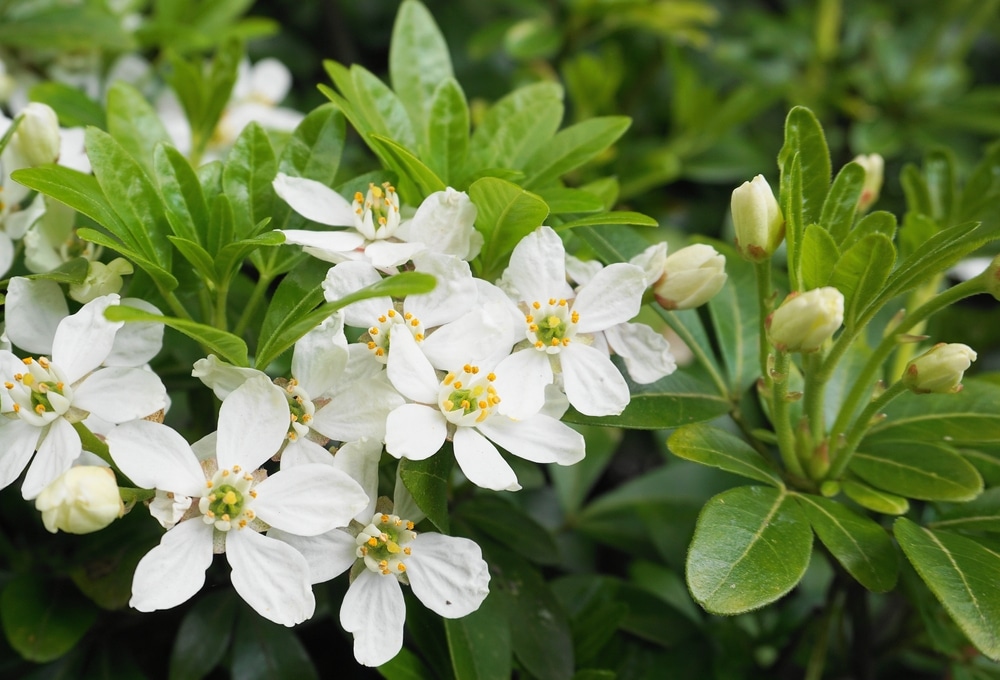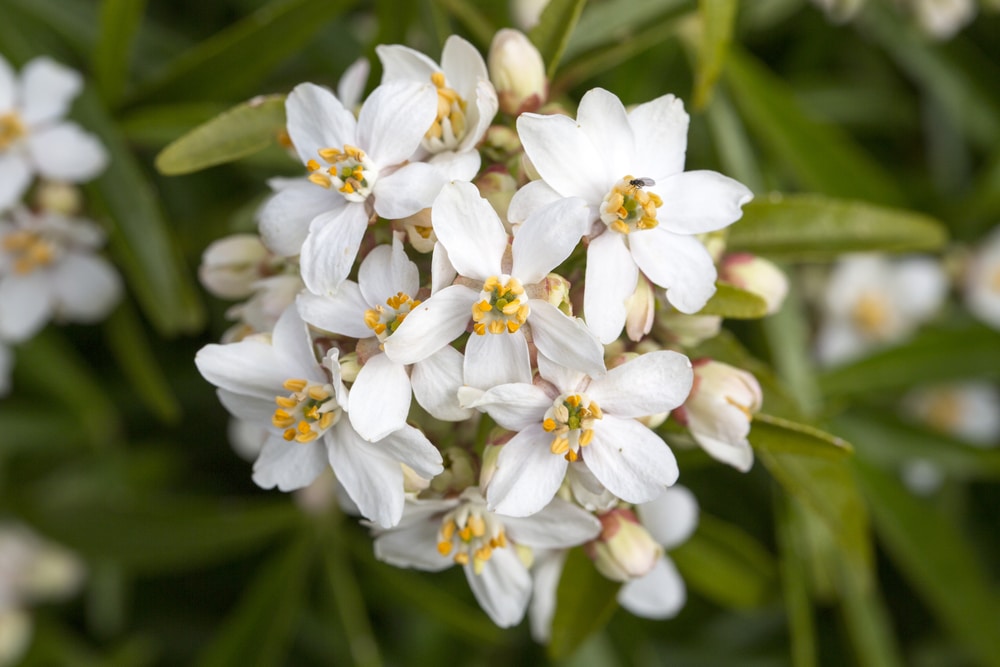A Mexican Orange is an excellent choice when you need a unique flowering shrub for your yard. As with any shrub, the Mexican Orange has its own care needs. This guide will outline the best way to ensure your Mexican Orange thrives all season.
| Botanical Name | Choisya ternata |
| Common Name | Mexican orange |
| Plant Type | Perennial |
| Flower Color | White star-shaped |
| Size When Mature | 72 to 96 inches |
| Bloom Time | Late spring and early summer |
| Sun Requirements | Full/Partial Sun |
| USDA Hardiness Zones | 7-10 |
| Soil PH Range | 6.5 to 7 |
| Soil Type | Slightly acidic, well-drained |
| Water Needs | Medium |
| Native Area | North America |
What You Need To Know About Mexican Orange
The Mexican Orange is a perennial evergreen shrub with white flowers and broad, shining green leaves. This North American native blossoms in the spring and summer. Toward the end of its bloom season, the citrus-scented blooms turn to an inedible fruit.
How to Care For Mexican Orange
The Mexican orange grows best in USDA zones 7 through 10. In the proper growing conditions, the Mexican orange can grow as much as two feet per year. What’s best is that you can start your shrub in a pot before transferring it to a bed. It requires little to no pruning.
Light
Although the Mexican orange prefers full sun, your shrub will be fine if you want to plant one near your foundation or other areas that don’t have full sun all day. Still, remember that although a Mexican orange will survive in full shade, you might see fewer flowers and increased foliage.
Water and Soil Needs
The best soil for a Mexican orange is well-drained, fertile, and slightly acidic. You can get a soil test kit to determine your soil’s pH, then adjust accordingly. If your soil is too acidic, add some powdered limestone to bring the acidity down. Or, if your soil’s pH is too low, add a bit of sulfur to give it a boost.
You should water your Mexican orange deeply when you first plant, then weekly for the first several months to develop a robust root system. Once your shrub is established, you can decrease watering slightly, adjusting for heat and rain.
Temperature Requirements
The Mexican orange grows best in zones 7 through 10. It overwinters well in areas with milder winters, where winters typically don’t dip far below freezing. However, it can do well in cooler zones with proper care in winter.
Fertilizer
A Mexican orange will need compost in the spring and a second, less intense round in the fall. If you don’t have compost or manure, any fertilizer with high potassium and low nitrogen levels will do.
Common Diseases
Spider mites and snails are common Mexican orange pests but are relatively easy to manage. If you use pesticides to remove pests, use something safe for pollinators.
The primary disease you’ll need to look out for is the alpha mosaic virus. Unfortunately, there’s no treatment for alpha mosaic. The only remedy is removing the shrub entirely and avoiding contact with neighboring plants.
Mexican Orange Propagation
There are a few ways you can propagate your Mexican orange.
First, you can propagate from seeds. Gather your seeds in the spring, then plant them about one-half inch in damp soil. Cover with plastic and place in a warm, sunny spot. Remove the plastic when the seedlings reach two inches, then pot or plant when they reach four inches tall.
You can also propagate from a cutting. Take a six-inch cutting from a hard branch, leaving one or two leaves toward the top. Coat the cut edge with a rooting hormone. Then, plant approximately one inch deep in six to eight inches of soil. Keep moist but away from direct sunlight.
Wrapping Up
The Mexican orange is a lovely ornamental perennial that’ll give you sweet-smelling blooms yearly. If you follow the steps in this article, your shrub can be the shining star of your yard.


